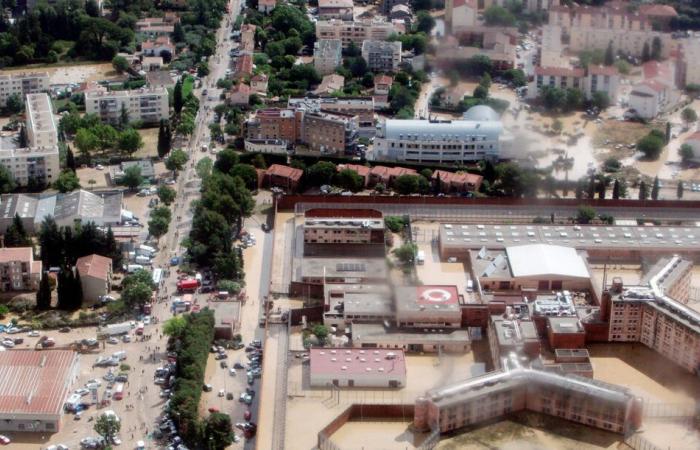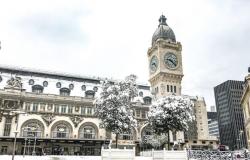
Devastating waves, streets transformed into raging rivers, thousands of buildings flooded and 27 victims. A reduced toll thanks to the courage of civil security helicopter pilots, with 1,350 rescues to their credit. Almost as many carried out by first responders on the ground. This is the outcome of the destructive floods of Dracénie on June 15, 2010.
A significant episode for the populations first of all, and also for local elected officials in their reflections on the prevention of this type of natural disaster. And for good reason, in addition to the human toll is added the cost of these enormous bad weather for the territory: around a billion euros. A hefty addition linked to a sad observation: in terms of regulating water flows, the Dragon City started from nothing… or almost.
A starting point from almost zero
“Everything had to be done”immediately summarize Jean-Pierre Souza, deputy mayor responsible for the prevention of natural and technological risks, and Marie Scheffer, responsible for rainwater within the community. “At the time of the 2010 floods, the town only had two retention basins”specifies the technician. “One at La Jarre, the other at Incapis. We have since enlarged and improved them.” The first, located under the La Jarre car park, can today absorb up to 6,800m³ of water, or two and a half times the volume of an Olympic swimming pool. As for that of Incapis, it can now accommodate up to 4,200m³.
A very meager system, symbol of unbridled urbanization in defiance of natural risks, carried out for several decades throughout France. Fifteen years later, the party is over now. Construction must comply with the flood potential of the land. Many schemes measure possible risks according to several flood levels. “The 2010 flood is the reference for all our documents”specifies the elected official. “We need to strengthen this network in a context of land scarcity,” he continues.. “A context to which is added the Dracénoise topography, making the task a little more complex.”
And for good reason, Draguignan stands in the hollow of a basin with the Col de l'Ange on one side, the Malmont on the other. “There are five large valleys – and other smaller ones – which provide water to the commune: Valère, Riaille, Tours, Sainte-Barbe and Saint-Martin, which are divided into four watersheds”explains Marie Scheffer. “A certain consistency is required in positioning the retention basins.” Added to this are the technical prerequisites specific to all retention works. “The bottom of the basin must be almost flat, and attached to a valley or running water network, without the water level of the structure reaching the classification of a dam.”
Retention capacity already doubled
Once the observation is made, we must act. Because a devastating Mediterranean episode can darken the sky at any time of the year, without warning. The municipality has increased the construction of works in the area: eleven in total. “We have built ponds in the four corners of the town”reports Marie Scheffer, a map in hand, allowing you to locate the different works. “They take several forms. There are retention basins, which can be buried or in the open air”she introduces. Like Les Incapis or La Jarre, but also Boulevard Gambetta where a 3,000m³ pool was built.
Likewise, Chemin de Folletière, in 2022, where an additional capacity of 2,100m³ has been created. “There is “continues Jean-Pierre Souza. And for good reason, it is the green theater, capable of storing 4,000m³ of water. “Given that it is a structure open to the public, it must be emptied within 24 hours”specifies the elected official. And the list grew, little by little: under the Haussmann park (600m³), in front of the Léon-Blum high school (1,500m³). “There is also the possibility of storing water using a rain frame”continues Marie Scheffer. “The volume extends along the length, there is one under part of Boulevard Clemenceau, between the Allées d'Azémar and the intersection with Boulevard Jean-Jaurès, with a capacity of 900m³; another is located along from Boulevard Blum, for a capacity of 530m³.” In total, the capacity of the network increased from less than 11,000m³ to 18,780m³, or seven and a half Olympic swimming pools.
“We have also added swales to the network. These are much smaller open-air retention basins”explains the technician. Several are in service, Chemin de la Clappe, very close to the river, Chemin des Faïsses or even at the Col de l'Ange, exactly in the hairpin, with a storage volume of 200m³. And it's not over, since the town hall still has a long list of works to build as part of the Flood Action and Prevention Plan (Papi) for the period 2020-2026, and rainwater management urban (Gepu). “This plan goes hand in hand with actions to manage aquatic environments, in this case the Nartuby reformation operations carried out by the Argens Mixed Union (SMA),” explains Jean-Pierre Souza, also vice-president of the structure, currently at work in Trans-en-Provence, along the D1555 and D54 roads. “It’s action 35 of the Papi de l’Argens”, specifies the elected official. “This takes time, because we must first adapt things downstream before acting upstream, otherwise the flow will be disproportionate downstream, making the situation even worse,” concludes Marie Scheffer.
Other basins in perspective
“As part of Urban Rainwater Management (Gepu), we will build additional basins in the years to come”announces Marie Scheffer, head of rainwater for the town of Draguignan. “In addition, action 35 of the Flood Prevention Action Plan (Papi) of Argens, led by the Syndicat Mixte de l'Argens (SMA), will take effect with reformation operations of the Nartuby to improve its flow”agrees Jean-Pierre Souza, deputy mayor responsible for natural risk management and vice-president of the SMA. An operation planned at four points of the river, on the lands of Draguignan. Namely, the Lorgues bridge, the sector close to the 4th Material Regiment (Rmat), at the Incapis- SNCF bridge, and behind the Gémo store.
17 pools in preparation
Beyond this work on the Nartuby, the municipality will continue the construction of additional retention basins. “Seventeen are already in the pipeline, but there will be more, because we act according to the land available, whether it is for sale or not”continues the technician, with a map of future operations. A series of pools will be built on the heights of Malmont, another, not far from the motocross field.
Four are also planned along the Valère valley, for a total capacity of 35,100m³, or twice the current capacity of the municipality. Others are planned, near the cemetery (1,000m³), or on the Sainte-Barbe grounds with a pool of 18,600m³. Another is planned along the Saint-Martin valley, for a volume of retained water of 14,000m³. In total, the city will then have more than 94,000m³ of rainwater storage. And it's not over yet. During the last municipal council, the City acquired land from Crédit Agricole to create a 3,800m³ structure in early 2025.
Maintaining individual pools at all costs
At the residential level, the problem of individual pools also arises. “Each house is equipped with a retention basin adapted to protect it from urban runoff,” indicates Marie Scheffer. “The valley helps protect the neighbor below by compensating for the waterproofing caused by the house and thus not aggravating the runoff situation. »
Waterproofed valleys to make garages
In this matter, we will apply the same policy as for the Legal Clearing Obligations (OLD)”, announces Jean-Pierre Souza, elected in charge of the file. “We will carry out checks on individuals to ensure that standards are respected. » And for good reason, “too often, we discover that the owners have waterproofed these individual valleys to make garages for cars, carports, or gain garden space by filling it in,” explains the technician. “We want to avoid this type of practice. They transfer hydraulic pressure to their neighbors, and downstream, with additional runoff. »
The municipal teams will be able to fine offenders and draw up reports so that standards are brought into compliance. Added to this is the recent modification of the Local Urban Plan (PLU), which limits the portion of sealed land for each plot, depending on the zone in which it is located. The text thus provides for an “obligation of rain retention on the plot and conservation of a percentage of open green spaces ranging from 20% to 70% of the land unit depending on the PLU zone. » Furthermore, it is provided “that for constructions or installations presenting a new waterproofing surface equal to or greater than 30 m² a suitable rainwater retention device is required. »So many stones in the building in the fight against floods. “It’s everyone’s business,” they conclude.





